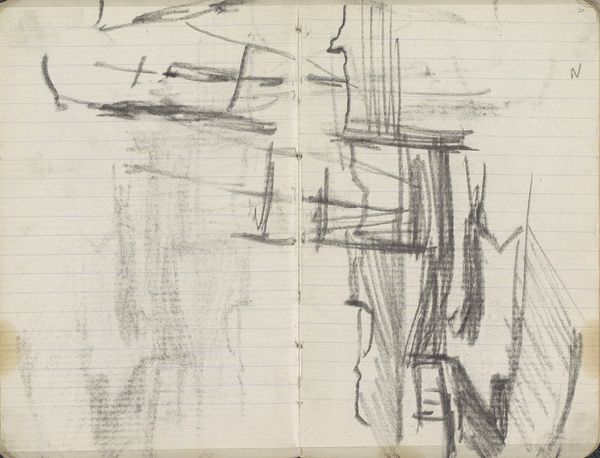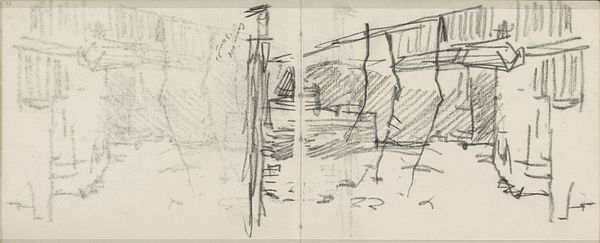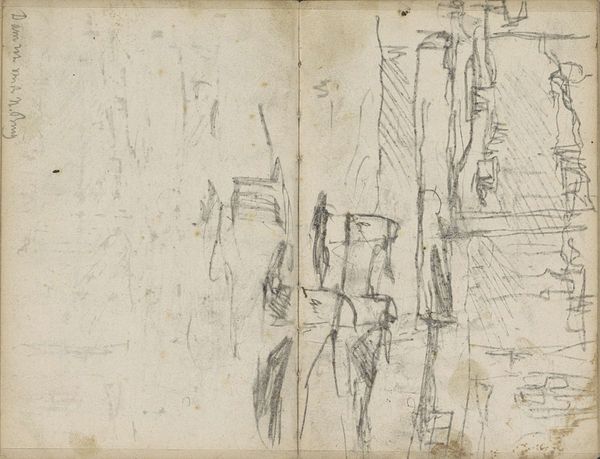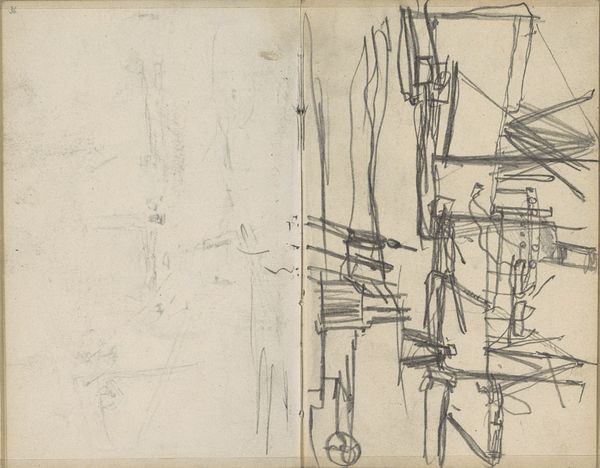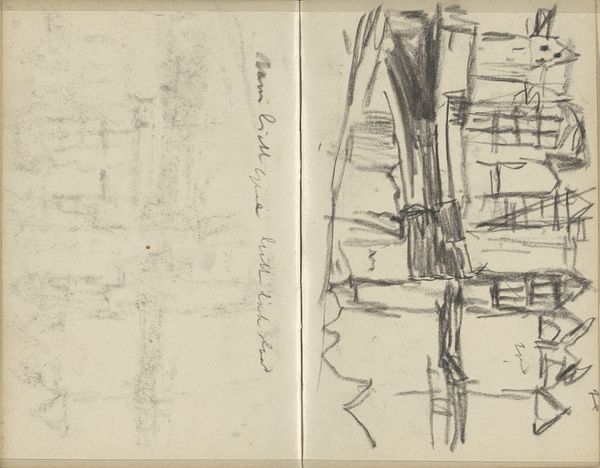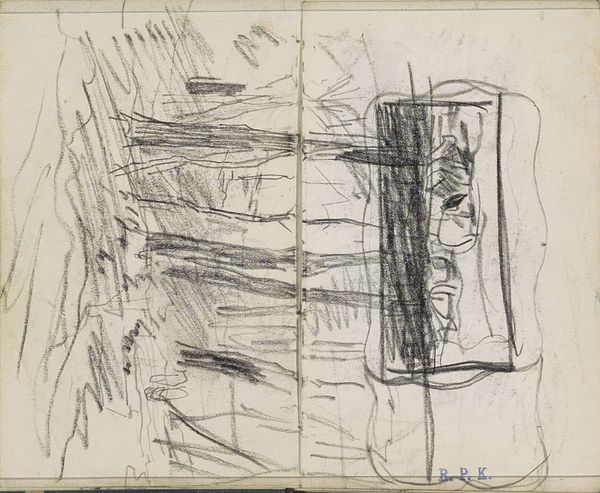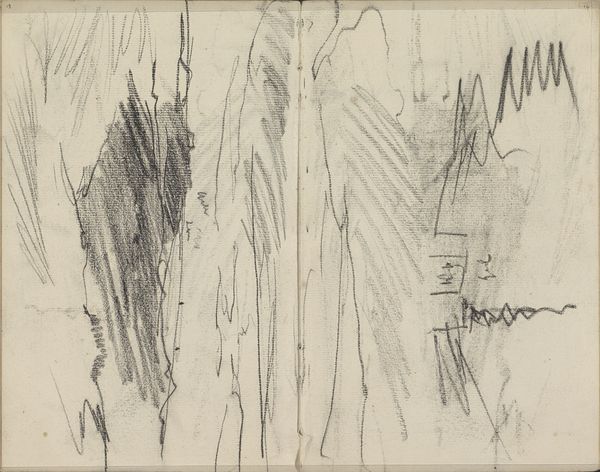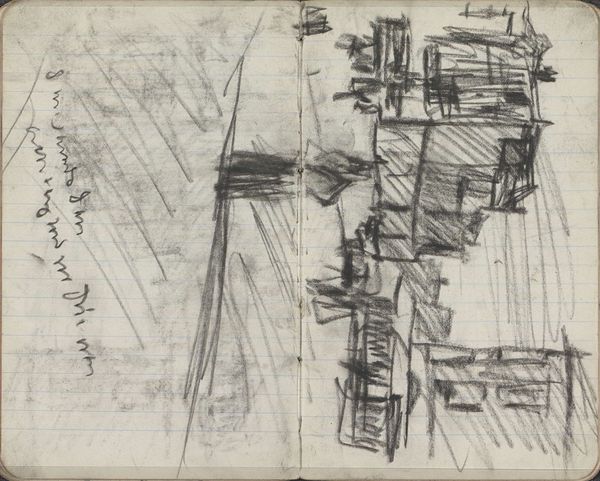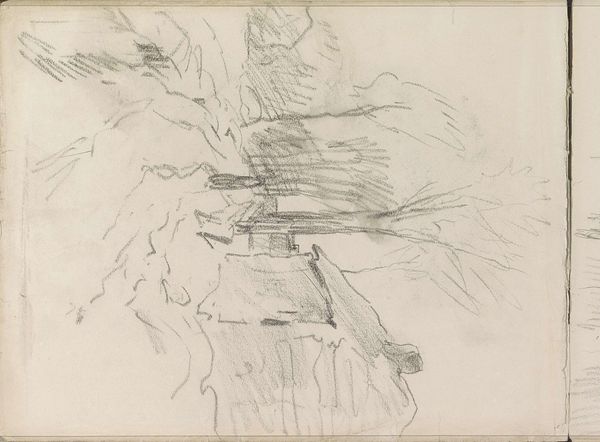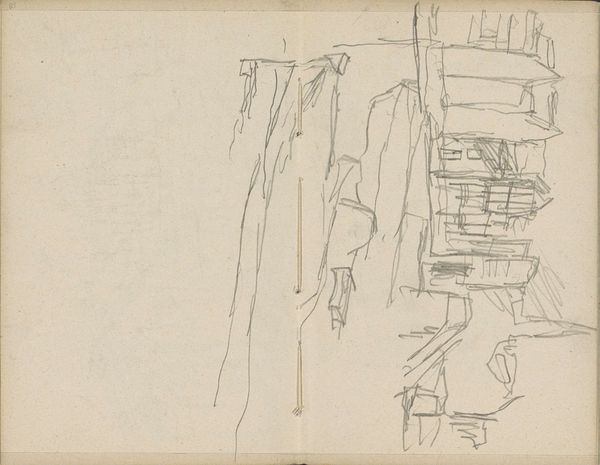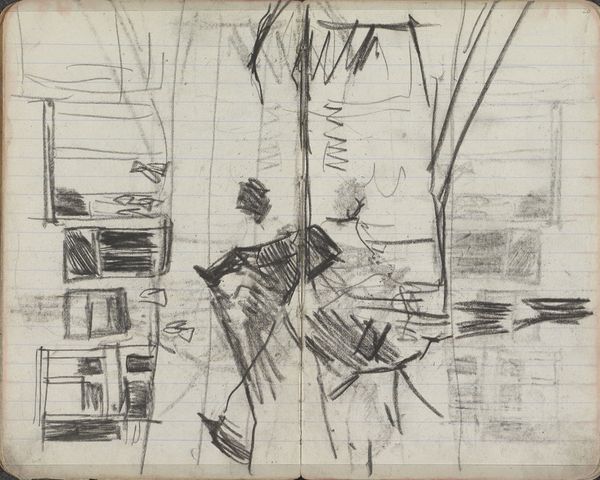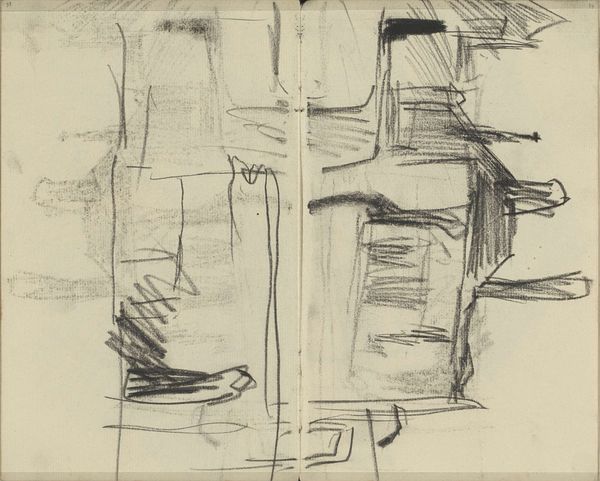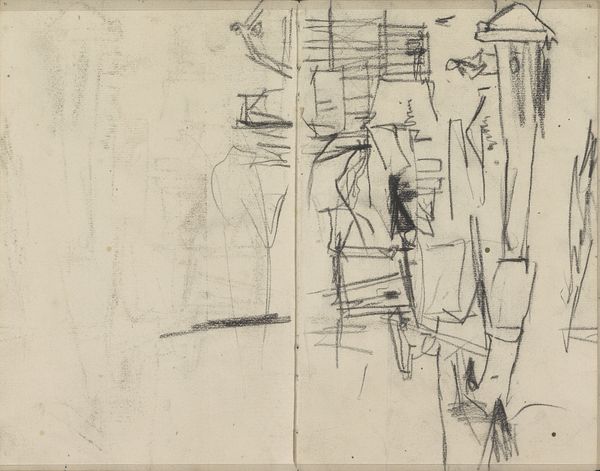
Gebouwen, mogelijk aan de Prinseneilandsgracht te Amsterdam 1896 - 1914
0:00
0:00
Copyright: Rijks Museum: Open Domain
Curator: Here we have George Hendrik Breitner's pencil drawing, “Gebouwen, mogelijk aan de Prinseneilandsgracht te Amsterdam,” created sometime between 1896 and 1914. Editor: It's stark, almost ghostly. The lines are so quick and sparse. I get a real sense of transience. Curator: Breitner was deeply embedded in Amsterdam's social fabric. These sketches capture a moment in the city's relentless transformation, as industrialisation reshaped urban landscapes and, with them, the lives of its inhabitants. This canal, then, becomes not just a site of commerce but also an arena for negotiation, production and consumption. Editor: Yes, and that's visible in the application. Look at how the pencil almost digs into the paper in places, especially around the buildings. It speaks to the labor involved, both in creating the artwork and implicitly in the city's construction itself. It also appears to be done "on the spot." The haste is part of the process of the industrial landscape as opposed to a pre-planned vista from his atelier. Curator: Absolutely. There's a performative element in his embrace of Impressionism, particularly his choice of subject matter, showing how urban development displaced many vulnerable communities. What appears to be the spontaneous execution echoes the constant churn that defined the lives of working-class citizens during this period of rapid modernisation. Editor: So the rough pencil work itself becomes a material statement, challenging the smooth, finished surfaces prized by the traditional academy, offering some form of accessibility of the social class and of art. It acknowledges the raw, unfinished nature of urban existence itself. Curator: Exactly. The drawing, though simple in appearance, acts as a form of quiet protest, forcing us to consider what gets lost in the relentless pursuit of progress, the communities left behind, and the resources they rely on. Editor: For me, it reinforces the value of understanding art as embedded in social practice and daily life, reminding us that these are not merely aesthetic choices, but powerful markers of social reality. Curator: Indeed. Art like this compels us to recognise art's power, to instigate societal consciousness and advocate change, thus bridging the past to ongoing conversations.
Comments
No comments
Be the first to comment and join the conversation on the ultimate creative platform.
